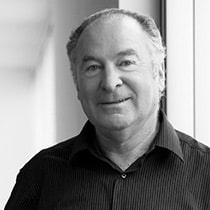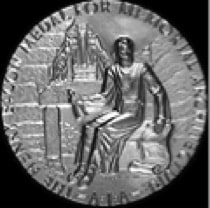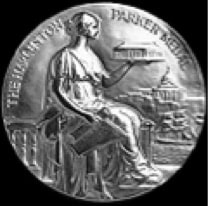
About the Architect
Stanley Saitowitz

The Memorial international design competition attracted 520 entries and was adjudicated by Holocaust survivors and community leaders. The winning design was submitted by Stanley Saitowitz, a Johannesburg, South Africa native who came to the United States in 1976 and whose credits include the California Museum of Photography; the San Francisco Embarcadero Promenade; Mill Race Park in Columbus, Indiana; the Tampa Museum of Art; Beth Sholom Synagogue in San Francisco; Beth El Synagogue in La Jolla, California; and numerous highly acclaimed multi-family residential projects and unique residences.
In his design submission, Mr. Saitowitz characterized the design’s evocative and metaphorical qualities:
Some think of it as six candles,
others call it a menorah.
Some a colonnade walling the civic plaza,
others six towers of spirit.
Some six columns for six million Jews,
others six exhausts of life.
Some call it a city of ice,
others remember a ruin of some civilization.
Some speak of six pillars of breath,
others six chambers of gas.
Some think of it as a fragment of Boston City Hall,
others call the buried chambers Hell.
Some think the pits of fire are six death camps,
others feel the shadows of six million numbers tattoo their flesh.
Awards
In the spring of 1998, the Memorial received two prestigious design awards, putting it in the company of important American national treasures, including the Statue of Liberty, the Jefferson Memorial, and the Vietnam Veterans Memorial.

The American Institute of Architects’ 1998 Henry Bacon Medal for Memorial Architecture
The American Institute of Architects (AIA), the nation’s principal association of architects and designers, selected the New England Holocaust Memorial to receive its Henry Bacon Medal for Memorial Architecture. The Bacon Award recognizes “architecture whose purpose is to portray, promote, or symbolize an idea of high spiritual concern.” The Memorial is only the eighth recipient of this prestigious award in its 32-year history.
The award nomination noted that “This memorial is a statement of memory of the six million Jewish victims of the Nazi tyranny and a reaffirmation of the basic human rights of all people.” The jury comments also stated, “This memorial is a fully integrated formal expression of the most devastating event of the 20th century, presented in startling fashion in the midst of an active/busy urban environment. The structure is well fabricated and executed. While it seems to be all exterior markers in space, there is an interior that’s very powerful. The memorial is a solemn, wrenching presence in the center of an urban environment, making this historical event a part of everyday experience.”

The Boston Society of Architects 1997 Harleston Parker Award
Given annually to “the most beautiful piece of architecture, building, monument or structure within the City of Boston or the metropolitan district,” the Boston Society of Architects granted its 1997 Harleston Parker Award to Stanley Saitowitz.
The committee reported that they were “won by the memorial’s power to move people emotionally and unite residents and tourists through their common humanity. We credited the power not to the text alone, but to the great creativity and vision of the designer. Simple forms and subtle translucencies provide a poetic counterpoint for the chilling strength of its message. The masterful formal abstraction of such concepts as the six million number and mist from below allow a multiplicity of interpretations that intensify and underscore the text’s lessons. Drawing strength from its shared context with the Freedom Trail and City Hall, the project simultaneously engages yet distinguishes itself from its surroundings, ensuring that its message can be experienced on many different levels. The Committee recognized the tremendous skill needed to design so profoundly in memory of such overwhelmingly tragic events.”
“The committee regards the New England Holocaust Memorial as a work of great substance and a major addition to Boston’s built environment. It is architecture with a soul. It transcends problem-solving and challenges its visitors to consider what they value. This is perhaps as great a contribution as a work of architecture can make. Truly, the power to move people emotionally comes primarily from knowledge of historic events. But a most profound beauty is present in this historic re-telling.”
